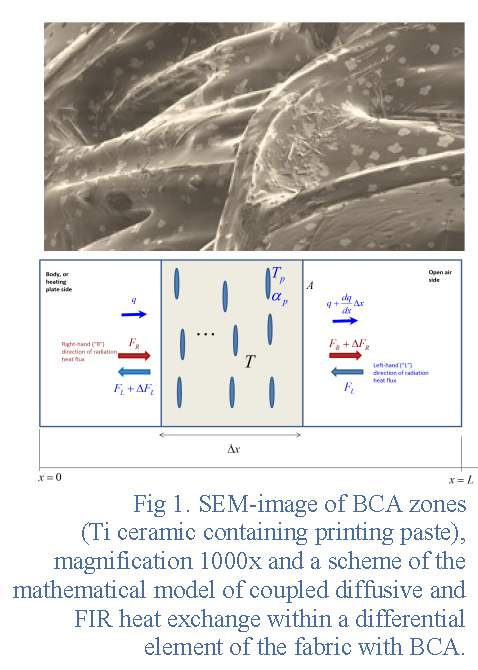Textile technologies and technical textile fabrics systems
THE MAIN RESULTS OF 2018
|
Investigation of the thermal properties of spacer fabrics with bio-ceramic additives experimentally and using the finite element model
The heat resistance of fabric enhanced by bio-ceramic additives (BCAs) is investigated theoretically and experimentally in order to determine the influence of modification of the infrared (IR) absorption property of fabric. The enhanced IR sensitivity of textiles improves the thermoregulatory processes when worn in cold environments. The finite element model has been developed by taking into account the coupled phenomena of heat conduction, surface convection and the interaction of the fabric with IR power flux by employing heat transfer differential equations and the Stefan-Boltzmann law. Evaluations of IR absorptivity, reflectivity and transmissivity, the temperature transients during the hot plate chamber test and heat retaining properties of the fabric heated by an IR lamp have been obtained experimentally and simulated using the developed finite element model. The values of model parameters have been found, which provided a satisfactory match between the computation and the experiment in all considered cases. Simultaneously, the obtained values were reasonably close to rough theoretical estimations. Efforts have been made to distinguish from each other the influence of diffusive and radiative components of heat transfer, which affect the results of thermal resistance tests. The comparative analysis of contributions of different heat exchange mechanisms allows a better understanding of the peculiarities of standard heat resistance measurement procedures applied to BCA-enhanced fabrics and facilitates the validation of the computation models.
rimantas.barauskas@ftmc.lt | ausra.abraitiene@ftmc.lt
|
 |
| |
|
Be the first to know the news